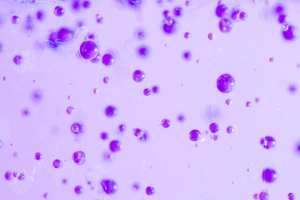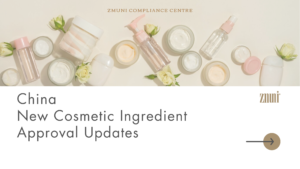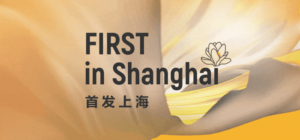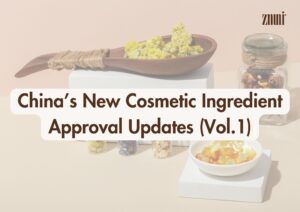+86 571 8659 2517
+86 180 5841 8258
info@zmuni.com

On March 27, 2025, China's National Health Commission (NHC) and the State Administration for Market Regulation (SAMR) jointly issued Announcement No. 2 of 2025, introducing 50 new national food safety standards and nine amendments. Among them, two key standards focus on food labeling: GB 7718-2025 National Food Safety Standard General Standard for the Labeling of Prepackaged Food and GB 28050-2025 National Food Safety Standard General Rules for Nutrition Labeling of Prepackaged Foods. A day earlier, on March 26, 2025, SAMR officially released the Administrative Measures for Supervision of Food Labeling, further strengthening regulatory oversight. All three regulation and food standards are set

On March 21, 2025, the National Center for Food Safety Risk Assessment (CFSA) issued a public consultation on four new food ingredients: Lutein esters, D-Psicose/D-Allulose, Bifidobacteriumanimalis subsp.lactis BLa80, and Bifidobacterium longum subsp. infantis LMG1158. The consultation period will end on April 20, 2025. Proposed Approval of D-Allulose: Produced by Two Methods D-Allulose is a six-carbon ketose sugar that occurs naturally in small amounts in foods such as figs, kiwifruits, and wheat. The product under consideration, D-Allulose, is produced through two methods: microbial fermentation and enzymatic conversion. Microbial fermentation: Glucose or sucrose is fermented by Escherichiacoli AS10, followed by purification,

As a natural pigment and antioxidant, anthocyanins enhance the color and nutritional value of food. This article explores their global regulatory status and highlights the importance of compliance for international market entry. Anthocyanins: A Unique Dual-Function Ingredient Anthocyanins are a class of compounds formed by anthocyanidins and sugars through glycosidic bonds. Naturally abundant in plant flowers, fruits, stems, leaves, and roots, they give plants vibrant red, purple, and blue hues. Typically extracted from fruits and vegetables, anthocyanins offer nutritional value. Their nature grants them a dual role—both as a food ingredient with health benefits and as a coloring agent classified

To help overseas companies stay up to date with cosmetic ingredient trends in China, ZMUni Compliance Centre will publish a regular series on NCI notifications. We hope this provides valuable insights for ingredient suppliers and brands looking to enter the Chinese market. From March 17 to 23, 2025, 2 new cosmetic ingredients were notified with the China National Medical Products Administration (NMPA). They include: Ingredient Name in CN&EN Notification No. Notifier in CN 金线莲(Anoectochilus roxburghii)提取物 Anoectochilus Roxburghii Extract 202500027 维琪医药研发(广东横琴)有限公司 聚天冬氨酸螯合锌 Polyaspartic acid chelated with zinc 202500028 优然创新(北京)技术研发中心有限公司 The technical requirements for the 2 new cosmetic ingredients mentioned above have not been disclosed, and

On March 21, 2025, the China National Center for Food Safety Risk Assessment released a notice seeking public comments on eight new food additive varieties. Comments are welcome until April 20, 2025. The details are as follows: Category Name in EN Remark New varieties of enzyme preparation Aminopeptidase / Xylanase New varieties of food nutrition fortifier 3-fucosyllactose, 3-FL Lacto-N-tetraose, LNT Food additives ascorbyl palmitate (enzymatic methods) Expand usage scope 2’-fucosyllactose Add quality specification requirements Processing aids sulfuricacid Expand usage scope ethyl acetate ZMUni Compliance Centre Reminder: As a leading third-party compliance service provider in China,

On March 16, the Launching Ceremony of 2025 National Premium Products Debut Season & "FIRST in Shanghai" Event Series kicked off at Zhangyuan, Jing'an Ditrict. At the luanching ceremony, the Shanghai Municipal Commission of Commerce officially released the Measures to Further Promote the High-Quality Development of Shanghai's First Launch Economy (FIRST in Shanghai 3.0), strengthening institutional innovation and service support to enhance the debut environment for domestic and international brands. From 1.0 to 3.0: Continuous Upgrades to Shanghai's First Launch Economy As a key driver in Shanghai's journey to becoming an international consumption hub, the "FIRST in Shanghai" Event Series has been

With the release of the Several Provisions on Supporting Cosmetic Ingredient Innovation in February 2025, China's new cosmetic ingredient (NCI) application has accelerated, more companies are submitting NCI notifications, and the number of successfully filed ingredients entering the public announcement stage continues to grow. To help overseas companies stay up to date with cosmetic ingredient trends in China, ZMUni Compliance Centre will publish a regular series on NCI Approvals. We hope this provides valuable insights for ingredient suppliers and brands looking to enter the Chinese market. From March 11 to 14, 2025, 4 new cosmetic ingredients were notified with the China

Recently, China has opened a public consultation on five national recommended standards related to health food raw materials, they include: Health food raw materials: Fish Oil Health food raw materials: Spirulina Health food raw materials: Coenzyme Q10 Health food raw materials: broken Ganoderma lucidum spore powder Health food materials: Melatonin The deadline for submitting comments is May 11. On December 1, 2020, five ingredients, including Coenzyme Q10, Fish Oil, Spirulina, Melatonin and broken Ganoderma lucidum spore powder were officially included in the Health Food Raw Material Directory. This Directory outlines the technical requirements for these ingredients and was
+86 571 8659 2517
+86 180 5841 8258
info@zmuni.com